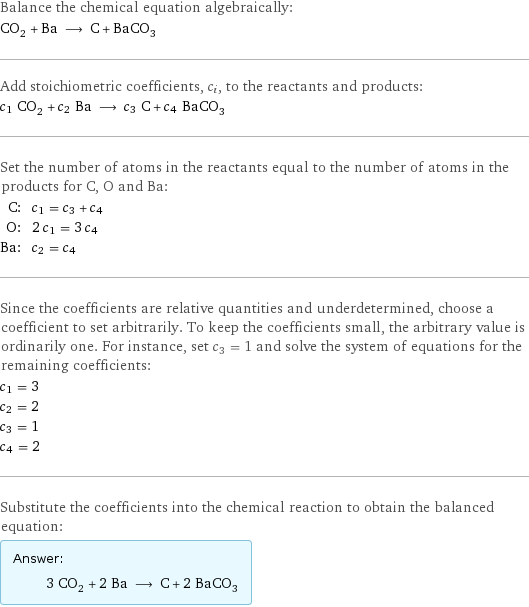Input interpretation

CO_2 carbon dioxide + Ba barium ⟶ C activated charcoal + BaCO_3 barium carbonate
Balanced equation

Balance the chemical equation algebraically: CO_2 + Ba ⟶ C + BaCO_3 Add stoichiometric coefficients, c_i, to the reactants and products: c_1 CO_2 + c_2 Ba ⟶ c_3 C + c_4 BaCO_3 Set the number of atoms in the reactants equal to the number of atoms in the products for C, O and Ba: C: | c_1 = c_3 + c_4 O: | 2 c_1 = 3 c_4 Ba: | c_2 = c_4 Since the coefficients are relative quantities and underdetermined, choose a coefficient to set arbitrarily. To keep the coefficients small, the arbitrary value is ordinarily one. For instance, set c_3 = 1 and solve the system of equations for the remaining coefficients: c_1 = 3 c_2 = 2 c_3 = 1 c_4 = 2 Substitute the coefficients into the chemical reaction to obtain the balanced equation: Answer: | | 3 CO_2 + 2 Ba ⟶ C + 2 BaCO_3